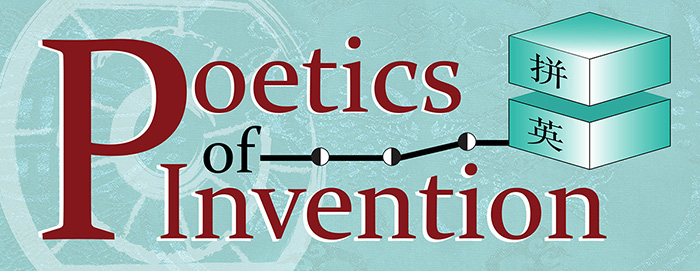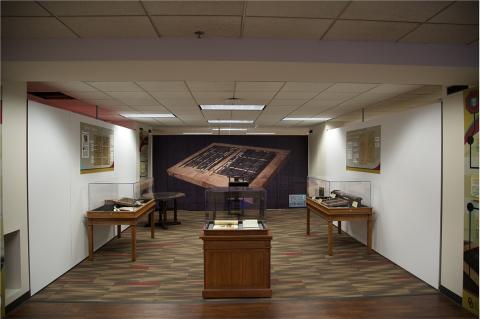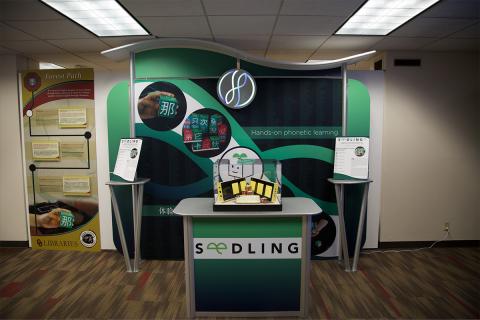Features
Features are the various types of items - including rime tables, murals, and even a musical instrument - that comprise this exhibition. Browse the full list of Features, or search by Room or Feature Type.

Pinying Fragments
Curator Dr. Jonathan Stalling's imaginative depiction of Pinying found in Song Dynasty style and aged artifact.
Feature Type: Fragment
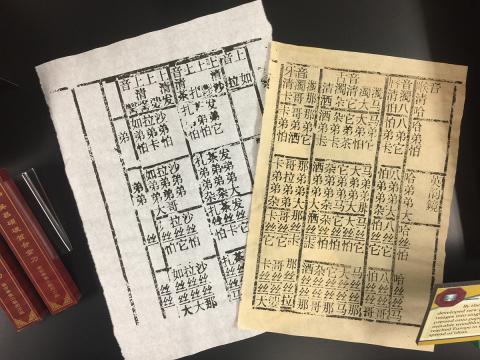
English Mirror Rimes
If learning English and translation had been undertaken by intellectuals during the Song Dynasty, and they utilized Pinying, they would have created tables such as these to aide others in language study.
Feature Type: Rime Table
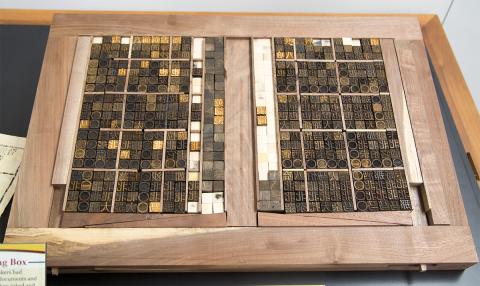
Woodblock Printing Box
Using traditional movable woodblock printing, scholars could have quickly and efficiently created English Rime Table books.
Feature Type: Printing Block
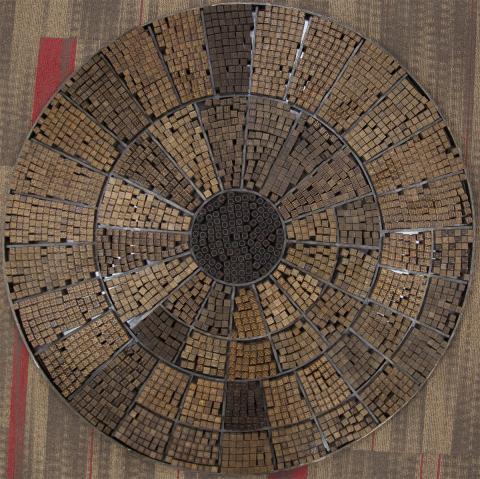
Movable Woodblock Print Table
Pinying printing could have been easily and efficiently maintained with the traditional movable woodblock type tables like this one.
Feature Type: Printing Block
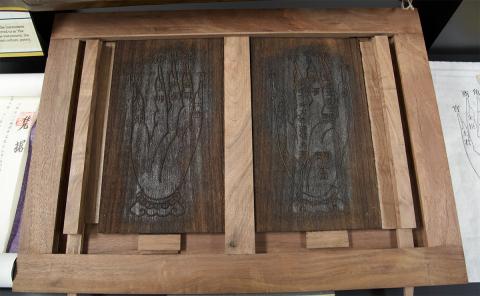
Printing Block for Hands
Images such as these hands help map language onto the pentatonic (5-tone) scale. Which each finger of the hand correlating with a bit of the language.
Feature Type: Printing Block
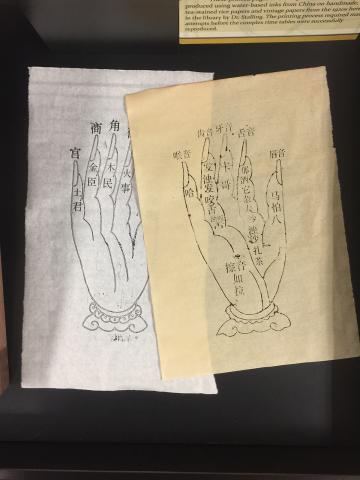
Printed hands
These printed hands showing the pentatonic (5-tone) scale mapped with Pinying would have been included in language practice and lesson books to aid readers in learning and pronouncing English.
Feature Type: Printed Image
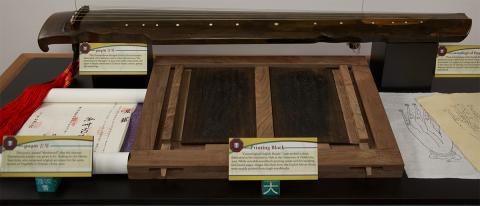
Guqin
Often referred to as "the instrument of the sages" this quiet and subtle instrument is deeply connected to Chinese literati culture, poetry, and cosmology.
Feature Type: Musical Instrument
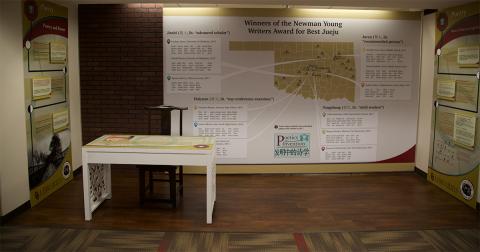
Jueju Room
The map of Oklahoma providing the backdrop for the Jueju poetry competition room reveals the many and diverse areas and ages from which students competed. Their results were weighed on the traditional Chinese Civil Service Exam with each being awarded a title of "child student," "recommended person," "top conference examinee," or "advanced scholar."
Feature Type: Room
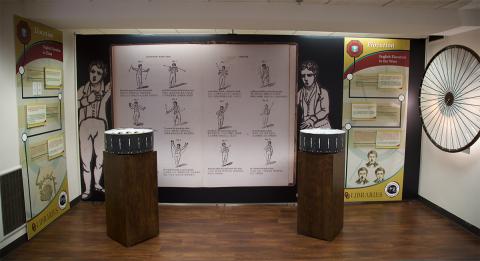
Victorian Elocution
The elocution movement in Victorian England led to exacting standards for pronunciation through body posture as English became a dominant global language. The interactive zoetropes--early forms of animation---that were part of this room showed some of those movements as well as mouth positions for pronouncing certain English sounds.
Feature Type: Room
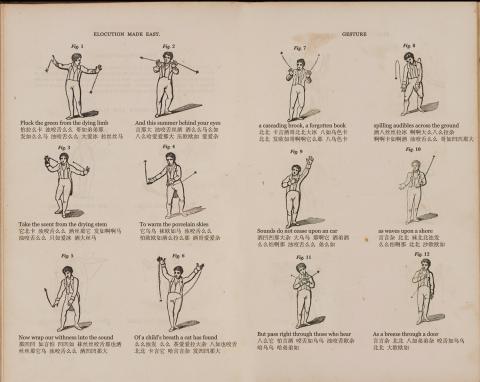
Elocution Backdrop
Images from a Victorian Era elocution manual paired with an English/Pinying poem written curator by Dr. Jonathan Stalling. As English became a global language correct body movements were taught as part of upper class education for public speaking.
Feature Type: Mural
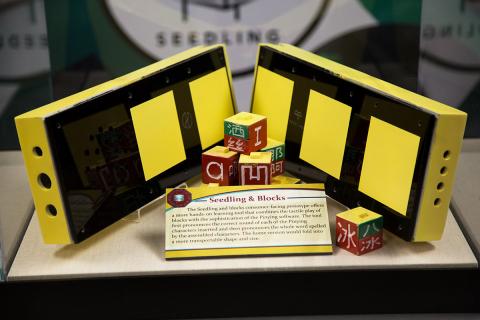
Seedling & Blocks
The Seedling and blocks consumer-facing prototype offers a more hands-on learning tool that combines the tactile play of blocks with the sophistication of the Pinying software. The tool first pronounces the correct sound of each of the Pinying characters inserted and then pronounces the whole word spelled by the assembled characters. The home version would fold into a more transportable shape and size.
Feature Type: Prototype
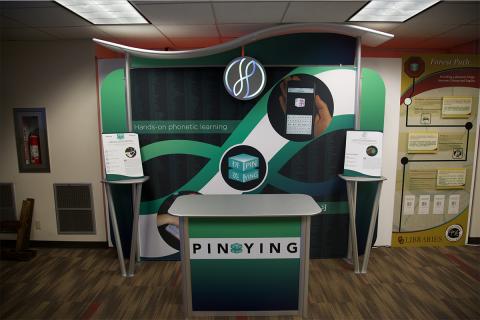
PinYing
Pinying was developed as an ios app so that no native English speakers can utilize block learning and pronunciation methods while improving their English.
Feature Type: Application
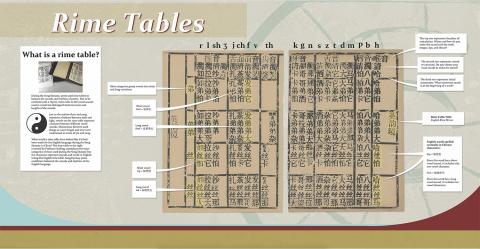
Rime Table Panel
During the Song Dynasty, poets used rime tables to balance the sounds and rhythms of poetry. Not to be confused with a rhyme, rimes refer to the vowel sounds used in words but distinguish between tones and lengths of sounds.
Feature Type: Mural

Chinese Cosmology Hand Panel
Images of hands such as these were used to relate categories within the Classical Chinese Imperial Knowledge System such as the yin and yang and Five Element theory. The first text to use hands as a mnemonic device for learning phonetics was a sixth century Tang Dynasty Rime Table.
Feature Type: Mural
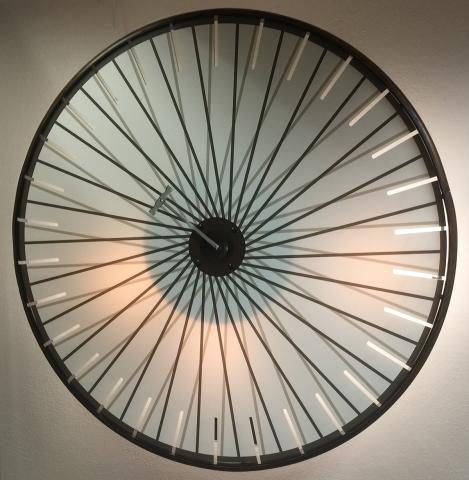
Large Zoetrope
Large zoetropes were first created using another new technology--the bicycle. A rotating bicycle wheel could provide the speed required to create the allusion of movement for the animation.
Feature Type: Zoetrope
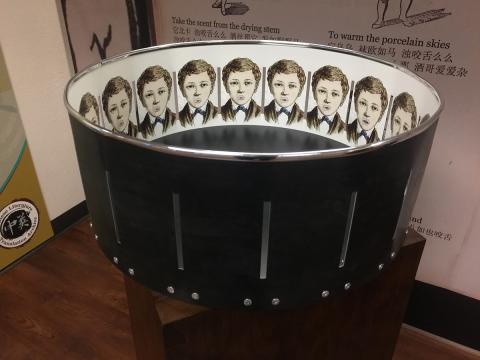
Tabletop Zoetrope
English vowels (in this case /oo/ as in “hoot” and /ah/ as in /hot/ can be described in terms of mouth position (rounded/un-rounded etc). Pinying could have used the rime-table tradition to teach these vowels by employing the Chinese characters /乌/ and /啊/ to represent the same vowel shapes. While zoetropes such as these could be used to show similarity between standardized English and Chinese vowels.
Feature Type: Zoetrope
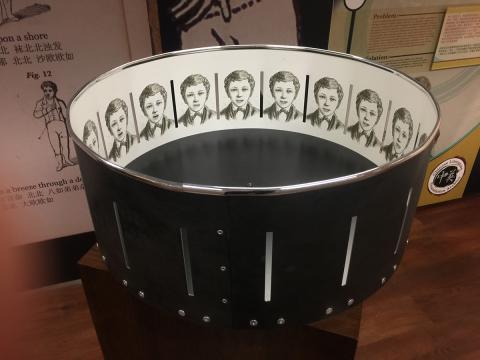
Tabletop Zoetrope
The English vowels /ee/ as in “he” could have been taught by employing Zoetropes to animate the standard mouth positions associated with this vowel. Zoetropes could have been used in China during this period to suggest a link between Victorian high-technology (animation) and language standardization.
Feature Type: Zoetrope
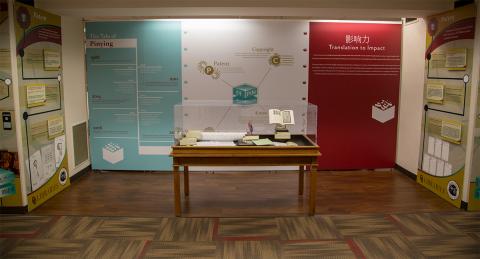
Intellectual Property Room
It takes a team of experts to help protect intellectual property as it makes its way from the brain to a public market. Hours or writing and reviewing go into legally creating a patent or a copyright.
Feature Type: Room
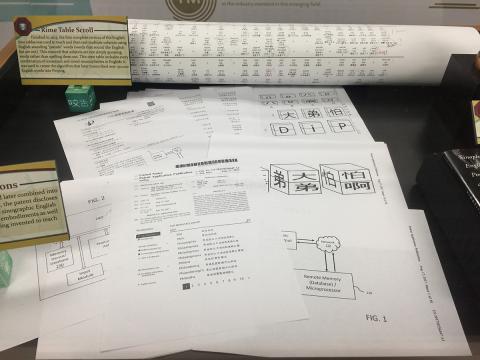
Patent Applications
Two patents for Pinying were filed and later combined into one. Through lists of claims and illustrations, the paten discloses and protects the Pinying method (called the sinographic English alphabet) and its various digital and analog embodiments as well as the "pop block" learning system Dr. Stalling invented to teach the method more quickly and intuitively.
Feature Type: Patent Documents
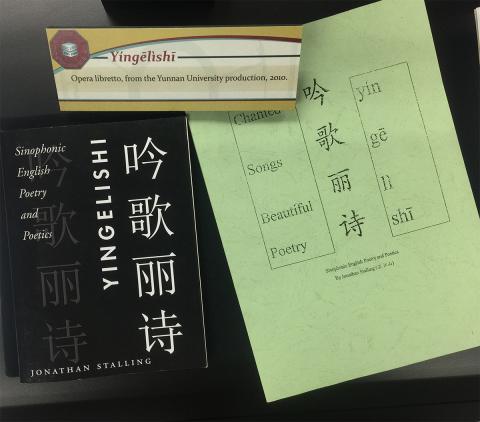
Yinglishi the Opera
A collection of opera libretto and books from Dr. Stalling's collection reflect his first writings and critical uses of Sinophonic English as well as other examples of poetry and poetics.
Feature Type: Publication
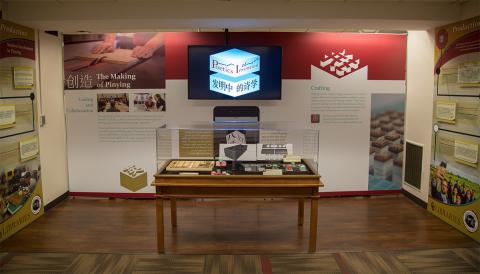
ICCEW Room
Marketing and development done with the help of the Ronnie K. Irani Center of the Creation of Economic Wealth provided expertise and ability to prototype some of the future models and methods of Pinying.
Feature Type: Room
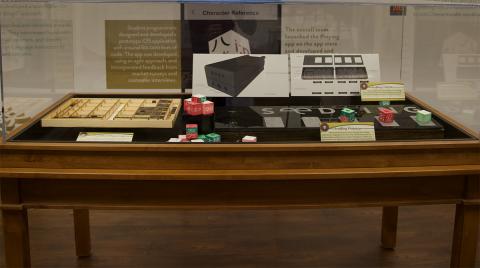
Prototypes
ICCEW provided expertise and access to professionals to create the starting points for the creation of the prototypes shown here. These prototypes became proofs of concept for the woodblock printing boxes to create the Rime Tables and the hands, the "pop block" action blocks, and the electronic chip reading and sound producing Seedling.
Feature Type: Prototype

